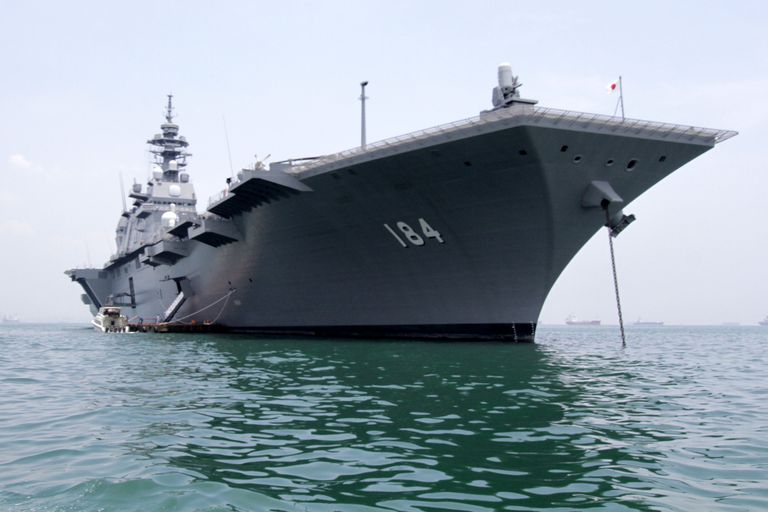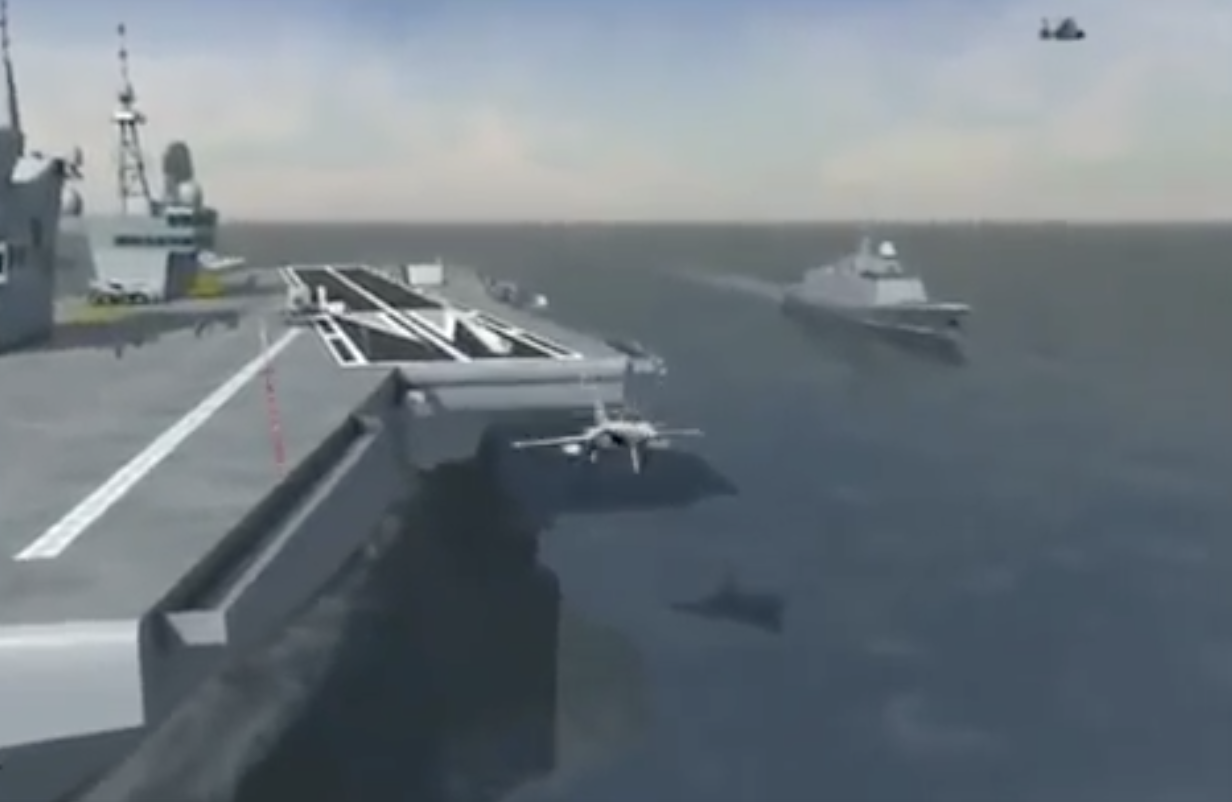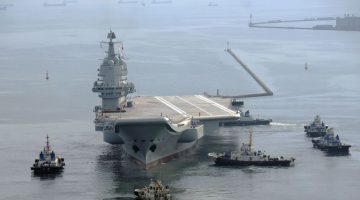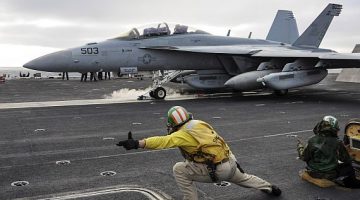(source: Popular Mechanics – Kyle Mizokami) – Japan Clears Way for First Aircraft Carriers in 70 Years
The carriers would be the first since the Imperial Japanese Navy of World War II.
Japan has cleared the way to purchase the vertical-takeoff and -landing version of the F-35 Joint Strike Fighter while looking into basing them on so-called helicopter carriers. The result would be Japan’s first fixed-wing aircraft carriers since World War II.
The report in Nippon News Network says that Japan has finalized plans to purchase 40 F-35B Joint Strike Fighters. Unlike its siblings, the F-35B is capable of taking off and landing vertically by rotating its exhaust nozzle ninety degrees down. This makes it capable of taking off from ships not fitted with aircraft-launching steam or electromagnetic catapults. Japan has already agreed to purchase 42 F-35A fighters, the same version used by the U.S. Air Force, with deliveries ongoing.
For decades the Japan Maritime Self Defense Force has slowly set the stage for introducing aircraft carriers. Japan’s navy built a number of ships with aviation capabilities, calling them landing ships, tank vessels, or helicopter destroyers. This culminated in the 2013 launch of JS Izumo. A “helicopter destroyer,” Izumo and her sister ship Kaga are 813 feet long and 19,500 tons. Each has a full-length flight deck and aviation elevators designed to raise and lower aircraft from a spacious internal hangar. The two ships were reportedly designed with the possibility of operating the F-35B at some point in the future.
Japan plans to use the ships to augment its air-defense coverage of the southern Ryukyu and Senkaku islands. The two island chains are at the far edge of Japanese territory where they are covered by just one—possibly an additional two with aerial refueling—air bases. At the same time China is stepping up flights and maritime transits by warships through the area, particularly the the Senkaku Islands (which it claims and calls the Diaoyu Islands) and the Miyako Strait. The deployment of a carrier into the area will increase Japan’s ability to patrol its airspace. (…)
The development of aircraft carriers is a major departure from Japanese postwar military policy. In the aftermath of World War II, Japan swore off war as an instrument of national policy, developing ground, air, and sea “self defense forces” to defend the country. What’s more, Tokyo banned the procurement of offense-oriented armed forces, including long-range missiles, marine infantry, bombers, and aircraft carriers. As China’s military continues its modernization, Japan has increasingly justified procuring “offensive” forces such as marines as long as they are used for defensive purposes.
Japan still has a long way to go before its new carrier force is operational. It still needs to order the F-35Bs, train pilots, and establish a base for them. Japan will heavily lean on the U.S. Marines to learn how to operate the aircraft from ships at sea. (For their part Japan’s order will make the Marines happy, as it should mean at least a slight decrease in the cost of its own F-35Bs.) If all goes reasonably well the first carrier should be operational within five or six years, or somewhere around 2025. (…)
READ FULL ARTICLE >>> www.popularmechanics.com
Photo Credit >>> Japanese warships docked at Tanjung Priok Port, Getty Images/ Anadolu Agency- as published in ibid












